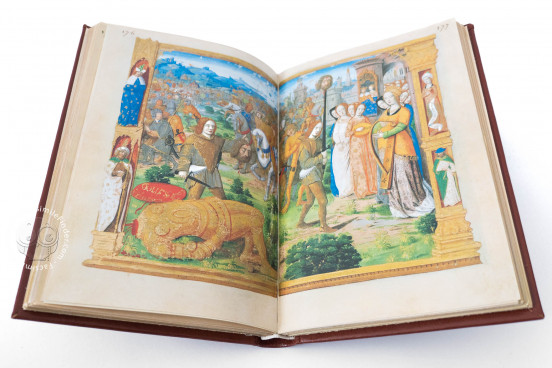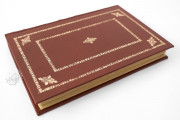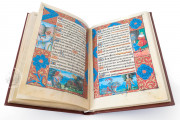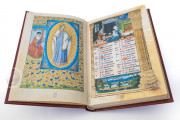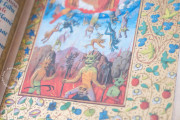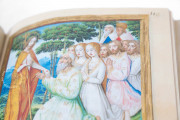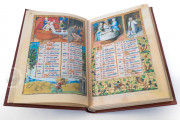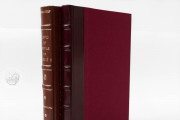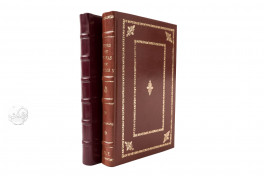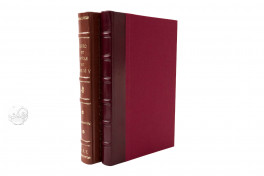One of the most important manuscripts in the Biblioteca Nacional de España in Madrid, it is known as the Book of Hours of Charles V, because it probably belonged to the emperor. The book is interesting because of the variety of themes represented in the illuminations. This manuscript was made at the beginning of the sixteenth century. The circumstances of the making of this precious codex are uncertain.
The evidence of Charles V’s ownership is contained in a seventeenth-century note written in the book that reads: “This book belonged to the emperor Charles V”. The manuscript was donated to the emperor and remained in the Austrian house until Philip III gave it to the cardinal François de Joyeuse. It belonged to the cardinal Francisco Javier de Zelada in the eighteenth century and was later donated to the Chatedral of Toledo.
The Book of Hours of Charles V: The Encyclopedic Themes of the Illustrations
There is general agreement that Jean Poyet was the main illuminator of the manuscript. However, it is highly probable that several artists decorated the codex. This devotional book is of great interest in the history of illumination because of the imaginative iconographies it displays, including a wide range of biblical stories and classical figures as well.
Of the 336 pages that constitute the manuscript, 320 are lavishly illuminated with high quality miniatures. More than 700 historiated initials mark the divisions of the text. The abundance of miniatures gave the painters enough space to develop a pictorial cycle that includes themes rarely found in devotional books.
Working as a pictorial encyclopedia, the Book of Hours shows biblical scenes along with images of the Sibyls, the dance of death, and the legend of the meeting of the three living and the three dead. The extensive decoration suggests that the book was meant to be contemplated more than read.
The Bucolic and Classical Contexts of the Illuminations
The calendar of the Book of Hours of Charles V presents original settings that recall bucolic scenes. Taking distance from the traditional representations of the labors, the calendar features the steps of the human life from the youth to the maturity.
Thus, the miniatures represent two men, a good man and a sinful one, who are portrayed each month while they grow up from the infancy to the age of maturity. The month of December is the month that features their death; the book shows that the soul of the pious man is accepted into heaven, while the impure soul goes to hell.
Biblical stories appear in the calendar as well. Adam in Eden appears in a natural landscape filled with animals. Other scenes from Genesis decorate the calendar, including Cain and Abel, Joseph in Egypt, and other narratives.
A remarkable section of the Book of Hours of Charles V is represented by the juxtaposition of the Sibyls to the life of Christ. Thus, for example, the Erythraean Sibyl is paralleled to the Annunciation and the Nativity, the Delphic Sibyl to the Passion.
The Sibyls as well as the prophets predicted the birth and passion of Christ. The images present the harmony between the classical and Christian cultures in an original pictorial language. Exodus, the Book of Revelation, and the New Testament are also represented in the pictorial cycle.
We have 1 facsimile edition of the manuscript "Madrid Hours of Charles V": Libro de Horas de Carlos V facsimile edition, published by Club Bibliófilo Versol, 1999
Request Info / Price
